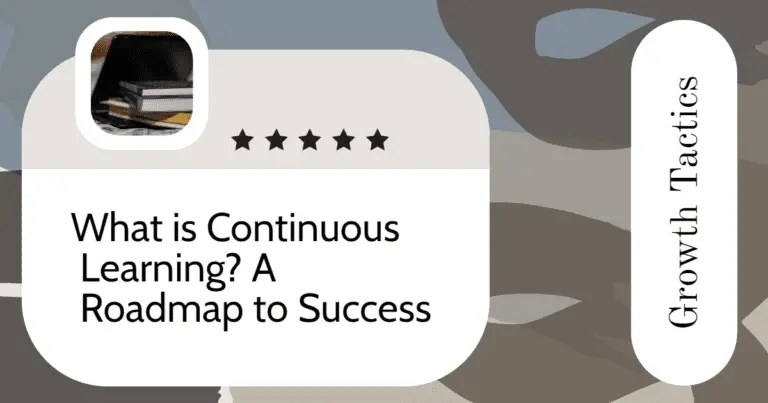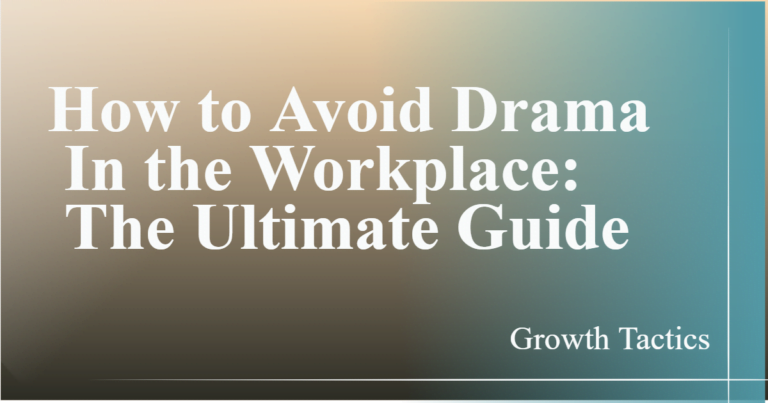Identifying a poor work environment is crucial for personal growth and productivity. It’s not just about being unhappy at work; it’s about recognizing when the workplace is affecting our well-being and taking steps to change it. Let’s dive into 15 clear signs of a poor work environment and practical solutions you can start applying today.
Jump To Section
1. Toxic Work Culture
A toxic work culture spreads negativity and reduces morale. It’s that feeling of dread every Sunday night, knowing you have to face another week in a hostile environment. When we see this in the Air Force, it’s not just about individual suffering – it’s a mission failure. It eats away at the fabric of teamwork and trust.
What to Do
Foster open communication. Create channels where everyone can share feedback safely. Encourage positivity by recognizing and celebrating small wins. Remember, people perform best when they feel heard and valued. Make sure your team knows you’re in their corner.
2. High Turnover Rates
Does everyone seem to be leaving the company? High turnover rates are a significant red flag indicating instability. In any leadership role, whether in a corporate setting or the military, high turnover disrupts plans and damages morale.
What to Do
Focus on retention. Advocate for better employee engagement and satisfaction. Show leadership by investing in team development and training. Think about the times you stayed in a hard job because your leader believed in you, be that leader. Retention isn’t about perks; it’s about purpose and belonging.
3. Lack of Clear Communication
Not sure what’s expected of you? Poor communication kills productivity and creates confusion. Having clear and precise orders is crucial.
What to Do
Start clear communication practices. Regular check-ins and detailed briefings can help. Make sure every team member knows their role. If you’re unsure, ask. That’s the sign of a strong leader. Regular updates keep everyone on the same page and moving toward the goal.
4. Unreasonable Work Schedules
Working long hours with no breaks leads to burnout and a poor work-life balance. Even in the Air Force, we know there’s a time when pushing too hard becomes counterproductive.
What to Do
Advocate for balanced work schedules. Discuss the importance of rest with your manager. Emphasize how balance boosts productivity. Everyone needs downtime to recharge. Productivity improves when people feel rested and appreciated.
5. Disengaged Coworkers
Colleagues who just don’t care make the workplace miserable. This lack of engagement can spread like a virus, infecting the entire team.
What to Do
Find ways to motivate and re-engage. Collaboration projects can re-ignite interest. Encourage team-building activities. People need to feel like they’re part of something bigger than themselves. Help them see their role in the mission. A team that plays together, stays together.
6. Burnout
Experiencing physical and mental fatigue is a sure sign of burnout and a poor work environment. Everyone has a limit, and ignoring it is dangerous. Burnout isn’t just hitting a wall; it’s crashing into it at full speed. Even the best professionals need to rest, not just for their sake but for the success of the mission.
What to Do
Prioritize self-care. Take regular breaks and use your vacation days. Seek support if needed and talk about workload management. Remember, you’re at your best when you’re rested and resilient. It’s not just about you, it’s about your team and your purpose.
7. High Absenteeism
Frequent absences? It could mean employees aren’t happy. High absenteeism is like a canary in the coal mine, signaling deeper issues within the work environment. If your team members aren’t showing up, it’s time to ask why.
What to Do
Address underlying issues that cause absenteeism. Ensure the workplace is supportive and listen to your team’s concerns. Listen to every voice because every voice matters. Make sure your team feels the same way. A supportive environment encourages presence and engagement.
8. Poor Leadership
Leaders who fail to guide or support harm the entire team’s morale and productivity. We’ve all seen it, a poor leader can sink the best team. Leadership is about empowerment and support, not just orders.
What to Do
Be the change. Step up as a leader within your capabilities. Encourage leadership development in your organization. Show what real leadership looks like. Mentor others and build a culture of trust. Leadership isn’t a title; it’s a responsibility to the mission and the people.
9. Lack of Recognition
Feeling unappreciated is demoralizing and leads to a lack of motivation. When hard work goes unnoticed, it’s like flying without a compass. Recognition isn’t just a pat on the back; it’s fuel for future success.
What to Do
Give recognition where it’s due. Share positive feedback openly. Create a culture where everyone’s efforts are acknowledged. Celebrate wins, big and small. Recognition drives morale and performance. Apply the same principle to your team.
10. Unhealthy Competition
Rivalry that turns nasty can devastate morale and productivity. Competition, when done wrong, can divide rather than unite. A team should be a cohesive unit, not a battleground.
What to Do
Promote healthy competition. Encourage teamwork over rivalry. Highlight the benefits of collaboration. Show that the real enemy is the challenge, not each other. We win by working together. Foster that same spirit in your workplace.
11. Inadequate Resources
Limited tools and resources stifle productivity and create frustration. When the necessary tools or support are missing, it’s like trying to build a house without a hammer. Frustration and inefficiency take over, and your mission becomes harder.
What to Do
First, identify what’s missing. Take stock of the resources you need to achieve your goals effectively. Communicate these needs clearly to your leadership. Advocate for the proper tools and support. Don’t just wait for things to improve, take action and seek out the resources that will empower you and your team to excel.
12. Negative Company Culture
A company culture rooted in negativity impacts everyone. It’s felt in every meeting, hallway, and email. A negative environment doesn’t just halt progress, it undermines trust and morale.
What to Do
Encourage positivity in every interaction. Lead by example; your actions speak louder than words. Foster a culture of respect and encouragement. Set the tone by recognizing efforts, celebrating accomplishments, and showing appreciation. Your attitude can set a powerful example, contributing to a healthier, more positive workplace.
13. Inefficient Hiring Process
A flawed hiring process brings in the wrong people, and this can disrupt team dynamics and lower productivity. Bringing in the wrong fit is like adding the wrong ingredient to a recipe, it affects the whole dish.
What to Do
Recommend improvements when you see flaws in the hiring process. Don’t just stand by; participate actively in hiring. Ensure new hires align with the company culture and mission. Share insights on what qualities and skills are needed. Remember, the right team starts with the right people.
14. Discrimination or Harassment
Discrimination or harassment creates a hostile environment that can’t be overlooked. It damages the well-being and productivity of everyone involved. Every voice deserves respect and dignity.
What to Do
Speak up promptly. Report any instances of discrimination or harassment. Don’t stay silent, silence enables the wrongdoers. Support and advocate for policies that build an inclusive and respectful workplace. Everyone has the right to feel safe and valued at work.
15. Resistance to Change
An unwillingness to adapt breeds frustration and stagnation. Change is inevitable, and resisting it only holds back progress. Clinging to the old ways while the world changes is a losing strategy.
What to Do
Promote adaptability within your team. Encourage a mindset that is open to change. Lead initiatives that embrace innovation and flexibility. Demonstrate the benefits of change through small, manageable steps. Show that adapting is not losing control but gaining new opportunities. Lead by embracing change and guiding others through it.
How to Avoid Contributing to a Toxic Work Environment
A toxic workplace can poison even the best teams. It drags down morale and productivity. As a leader or team member, your behavior is critical in preventing toxicity. Let’s focus on practical strategies to foster a positive, healthy workplace.
1. Practice Empathy
Firstly, understanding the perspectives of your colleagues is crucial for a healthy work environment. Think about their workloads, stress levels, and personal challenges. Ask yourself, “How would I feel in their shoes?” When you empathize, you build trust and respect. A simple gesture of understanding can make a huge difference.
2. Communicate Openly and Honestly
Clear communication is the backbone of any healthy environment. Share your thoughts, feedback, and concerns openly, but do it respectfully. Promote transparency. Foster a culture where everyone feels heard and valued. If you’re unsure about something, ask. If you see an issue, address it. Open dialogue resolves conflicts before they escalate.
3. Be Mindful of Your Actions
Every action counts. Avoid gossip and negative talk. These behaviors cripple a team. Focus on constructive feedback. Encourage, don’t criticize. Aim your efforts at building others up. Your actions set a tone. Lead by example.
4. Lead with Integrity
Integrity is doing the right thing, even when no one is watching. Strive to be honest, fair, and consistent. Hold yourself accountable. Your integrity will inspire others to act ethically and responsibly. It’s contagious in the best way.
5. Support Your Colleagues
Help your teammates thrive. Offer assistance when they’re overwhelmed. Celebrate their successes. Recognize their contributions. A culture of support boosts morale and productivity. When everyone looks out for each other, the whole team wins.
6. Foster Inclusion and Respect
Embrace diversity. Each team member brings unique strengths and perspectives. Value these differences. Ensure everyone feels included and respected. Discrimination and exclusion have no place in a productive work environment. Inclusivity breeds innovation and growth.
7. Focus on Solutions, Not Problems
It’s easy to point out problems. Real leadership finds solutions. When challenges arise, tackle them with a problem-solving attitude. Encourage your team to brainstorm ideas and work together on solutions. This proactive approach fosters a positive workplace culture.
Remember, a positive work environment starts with you. Practicing empathy, clear communication, integrity, and support will go a long way in creating a workplace where everyone can thrive. Each of us has a role to play, so let’s make sure we play it well. Together, we can transform challenges into opportunities and build a healthier, more positive team dynamic.
Conclusion
A poor work environment impacts both personal and professional life. By recognizing these signs and taking purposeful actions, you can transform your work experience. Remember, leadership, personal growth, and problem-solving start with you. Take the first step today and create a healthier, more productive work environment.








